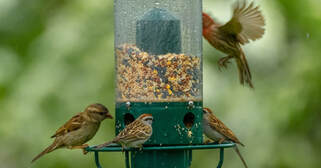 By Diana Madson on Jan 8, 2020 Yale Climate Connections You may enjoy gazing out the window and seeing familiar birds like goldfinches, robins, or warblers flitting between tree branches. But as the climate warms, many bird species will need to leave some of the places they’ve long considered home. “These areas just become no longer suitable, and they’ll have to move to new areas,” says Brooke Bateman, a senior scientist at the National Audubon Society. She says for bird lovers who want to visualize what this means in their own yards, Audubon created an online tool. Users can enter a ZIP code and learn more about local climate threats and the risks they pose to birds. “It really gives you a local snapshot of what’s happening with climate change,” she says. The tool highlights which species will no longer find suitable local habitat by the end of the century. Users can toggle between different levels of future warming. Bateman says this lets people see that without climate action, “Oh, these birds that come to my feeder, or these birds I see in my backyard … they’re not going to be there anymore.” But if carbon pollution is sharply reduced, the risks to many species are, too. The tool shows how climate action can help your favorite birds return to your feeder year after year. Reporting credit: Sarah Kennedy/ChavoBart Digital Media.
0 Comments
Your comment will be posted after it is approved.
Leave a Reply. |
Have a blog or blog idea?
Let us know (click) Other Blogs
VA Native Plant Society - click Brenda Clement Jones - click John Muir Laws' Blog - click Megan's Nature Nook - click Categories
All
Archives
September 2023
Blog Administrator:
Kathleen A. VMN since 2018 |